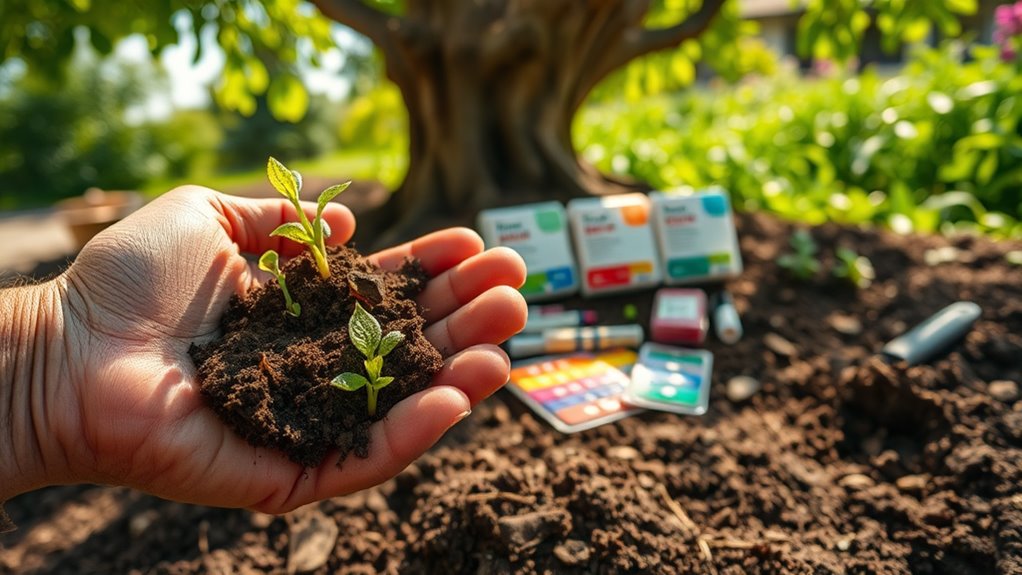I Tested My Soil and It Changed Everything
Soil can either be a gardener’s best friend or a hidden enemy. By testing your soil, you reveal its true character, uncovering deficiencies and imbalances that can hinder plant growth. The analysis provides insights into nutrient composition and pH levels, guiding your amendments and fertilization strategies. What specific adjustments can you make to improve your garden’s output? Understanding this could transform your gardening practices significantly.
The Importance of Soil Testing
When you consider the foundation of successful agriculture and gardening, soil testing emerges as a critical step.
Understanding your soil’s nutrient composition and pH level is essential for determining specific amendments.
Utilize soil testing tips such as sampling at multiple depths and seasons to get a comprehensive analysis.
This data optimizes plant health and increases yield, making informed decisions on fertilization crucial. Additionally, the process of soil pH testing helps in identifying the specific needs of your plants for proper nutrient availability.
Different Methods for Soil Testing
Soil testing employs various methods to evaluate nutrient levels, pH, and other critical factors affecting plant growth.
You can choose from several techniques to get accurate data:
-
Chemical Analysis: Involves lab testing of soil samples for nutrient composition and contaminants.
-
Field Testing Kits: Provides quick on-site results for pH and macronutrients.
-
Biological Testing: Assesses microbial activity to gauge soil health’s overall state. Additionally, understanding soil preparation techniques can significantly improve your garden’s productivity by ensuring balanced nutrient levels.
Analyzing Soil Health Results
Interpreting the results of soil health tests is crucial for informed agricultural decisions.
You’ll evaluate key metrics like pH, organic matter, and nutrient levels. Each parameter affects overall soil function and fertility.
Compare your findings with established benchmarks to identify deficiencies or imbalances. This analysis enables targeted amendments, optimizing resource use while enhancing soil structure and microbial activity for improved agricultural outcomes. Additionally, understanding soil preparation techniques can further enhance the effectiveness of your amendments and cultivation practices.
Impact of Soil Quality on Plant Growth
The quality of your soil directly influences plant growth and overall agricultural productivity. Understanding soil composition can optimize your garden.
Consider these factors:
-
Nutrient Availability: Essential nutrients like nitrogen, phosphorus, and potassium must be in adequate amounts for healthy growth.
-
Soil pH: A balanced pH ensures nutrient absorption and microbial activity.
-
Soil Structure: Good structure enhances water retention and root expansion.
To achieve optimal soil health, implementing proper soil preparation techniques is crucial for creating a thriving garden environment.
Adapting Gardening Practices Based on Test Results
When you analyze your soil test results, you’ll gain crucial insights that can help you tailor your gardening practices for optimal growth.
Adjusting pH levels can enhance nutrient availability, while identifying deficiencies guides your fertilization strategy.
Additionally, knowing your soil texture can inform irrigation techniques, ensuring adequate moisture retention. Essential soil prep can further improve the effectiveness of these targeted changes, significantly boosting plant health and productivity in your garden.
Sustainable Gardening Through Soil Management
While you focus on cultivating a flourishing garden, sustainable soil management becomes essential for long-term environmental health and productivity. To achieve this, consider the following practices:
-
Crop Rotation: Vary your plantings annually to prevent nutrient depletion and disrupt pest cycles.
-
Organic Amendments: Utilize compost and natural fertilizers to enhance soil structure and fertility.
-
Cover Crops: Grow cover crops during off-seasons to prevent erosion and improve soil quality. Incorporating practical steps for testing your soil can also lead to more informed amendments and better plant growth.

